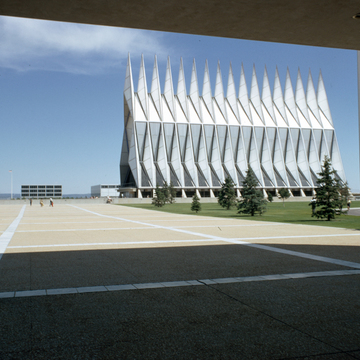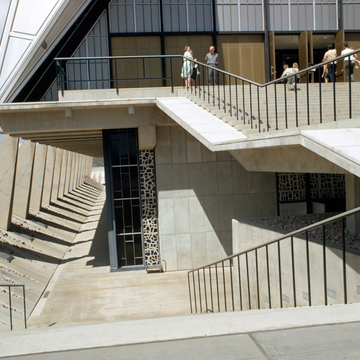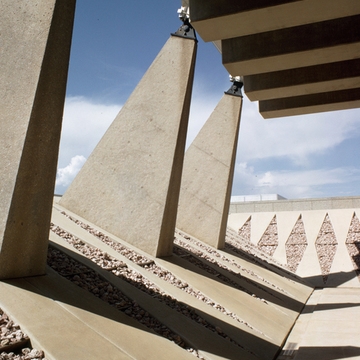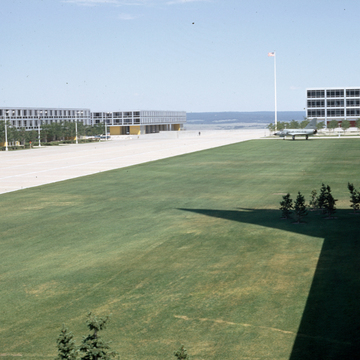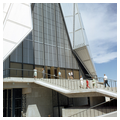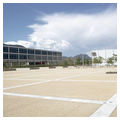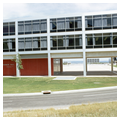Colorado Springs captured the U.S. Air Force Academy in 1954 by offering an 18,500-acre foothills site forested in ponderosa pine. This extensive open space surrounds well-planned residential, commercial, and public facilities as well as the campus itself. The academy's boxy buildings around a formal plaza by landscape architect Dan Kiley helped confirm Modernism as an acceptable style for the federal government, to the disappointment of traditionalists and many military top brass who wanted this to look more like West Point or Annapolis.
Skidmore, Owings and Merrill, whose interpretation of spare, contemporary design was highly regarded at the time, won the commission to design the campus despite competition from several prominent architects. Eero Saarinen wanted the job. So did Frank Lloyd Wright, who thought that the federal government owed him at least one large project. Wright, who proposed building the academy with a local sandstone, condemned SOM's design as “a factory for birdmen.” SOM, however, impressed the air force with its design for Oak Ridge, Tennessee, and the high quality and speedy completion of that federal project. Since 1955 the campus has emerged as an equal to West Point and Annapolis and has drawn Colorado Springs development northward.
Walter Netsch of the SOM Chicago office did the design work (1954–1957) with help from Gordon Bunshaft of SOM's New York office. Nathaniel Owings declared the academy design “styleless” and “timeless,” but it has become perhaps America's best and purest example of the International Style. Its horizontal skyscrapers—glass and metal boxes—flaunt a hard geometry and concede nothing to the awesome setting. Although part of the campus is off limits to tourists, it has become one of Colorado's most popular man-made attractions. Free public tours begin at the Barry Goldwater Visitor Center, North Entrance exit from I-25.

